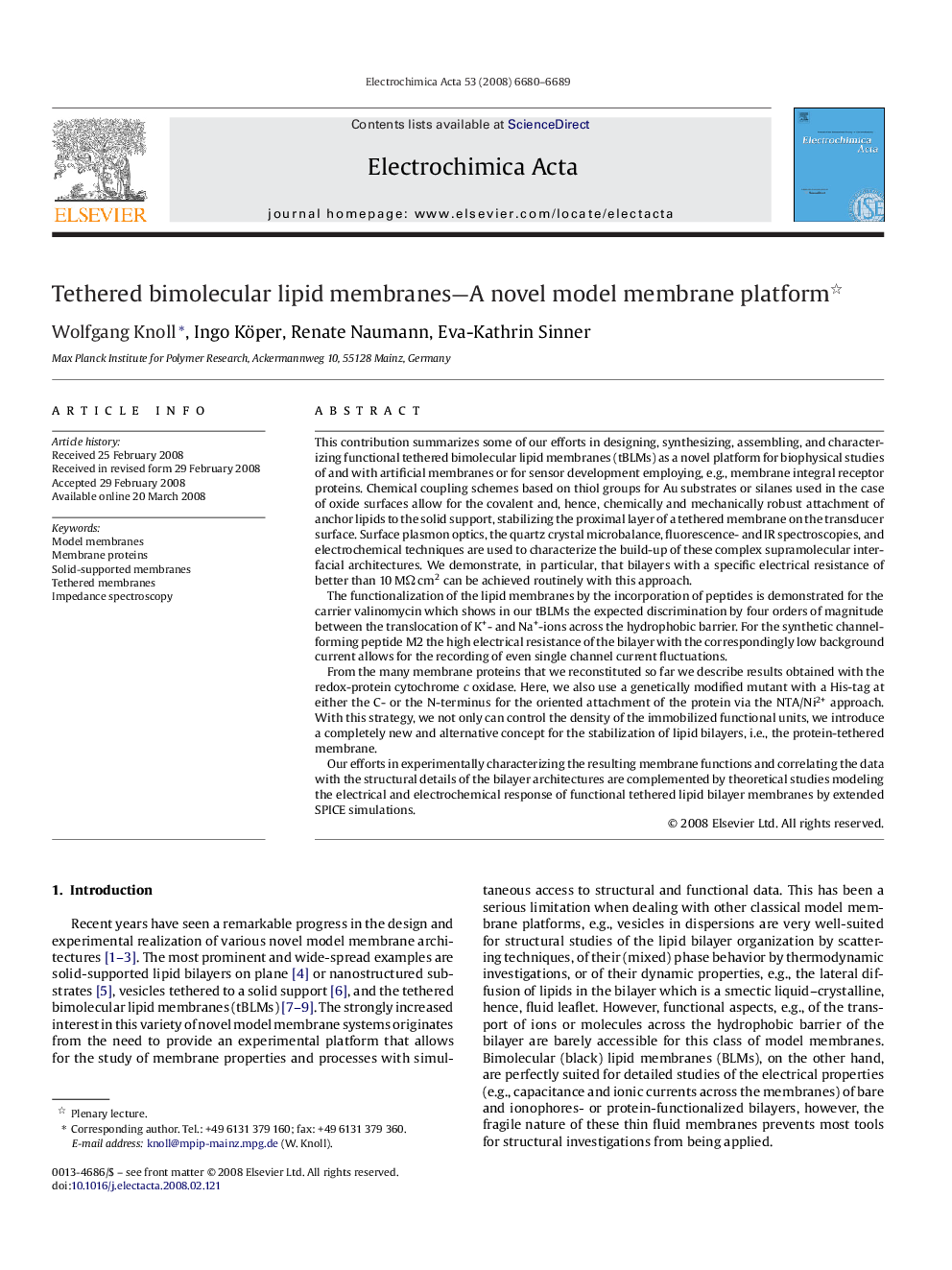| Article ID | Journal | Published Year | Pages | File Type |
|---|---|---|---|---|
| 194702 | Electrochimica Acta | 2008 | 10 Pages |
This contribution summarizes some of our efforts in designing, synthesizing, assembling, and characterizing functional tethered bimolecular lipid membranes (tBLMs) as a novel platform for biophysical studies of and with artificial membranes or for sensor development employing, e.g., membrane integral receptor proteins. Chemical coupling schemes based on thiol groups for Au substrates or silanes used in the case of oxide surfaces allow for the covalent and, hence, chemically and mechanically robust attachment of anchor lipids to the solid support, stabilizing the proximal layer of a tethered membrane on the transducer surface. Surface plasmon optics, the quartz crystal microbalance, fluorescence- and IR spectroscopies, and electrochemical techniques are used to characterize the build-up of these complex supramolecular interfacial architectures. We demonstrate, in particular, that bilayers with a specific electrical resistance of better than 10 MΩ cm2 can be achieved routinely with this approach.The functionalization of the lipid membranes by the incorporation of peptides is demonstrated for the carrier valinomycin which shows in our tBLMs the expected discrimination by four orders of magnitude between the translocation of K+- and Na+-ions across the hydrophobic barrier. For the synthetic channel-forming peptide M2 the high electrical resistance of the bilayer with the correspondingly low background current allows for the recording of even single channel current fluctuations.From the many membrane proteins that we reconstituted so far we describe results obtained with the redox-protein cytochrome c oxidase. Here, we also use a genetically modified mutant with a His-tag at either the C- or the N-terminus for the oriented attachment of the protein via the NTA/Ni2+ approach. With this strategy, we not only can control the density of the immobilized functional units, we introduce a completely new and alternative concept for the stabilization of lipid bilayers, i.e., the protein-tethered membrane.Our efforts in experimentally characterizing the resulting membrane functions and correlating the data with the structural details of the bilayer architectures are complemented by theoretical studies modeling the electrical and electrochemical response of functional tethered lipid bilayer membranes by extended SPICE simulations.
